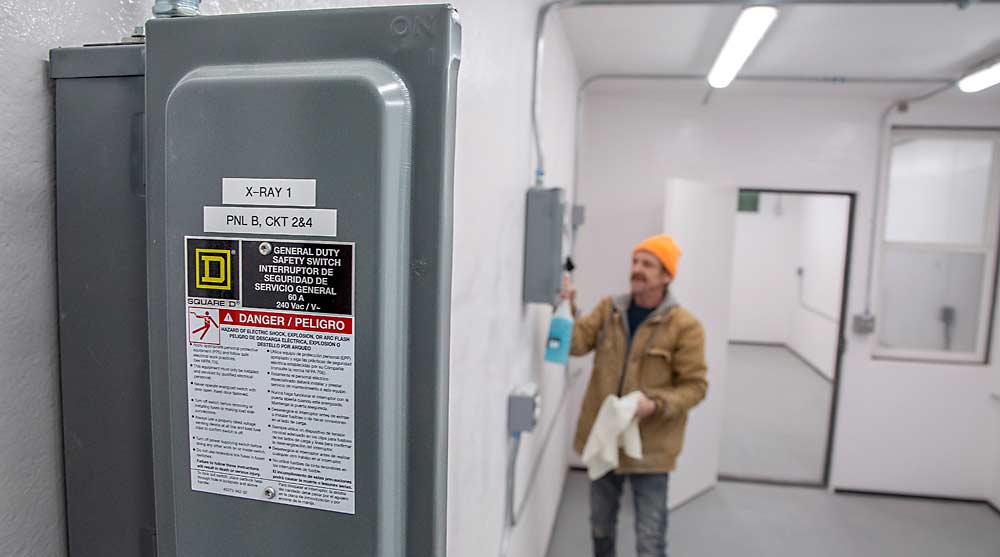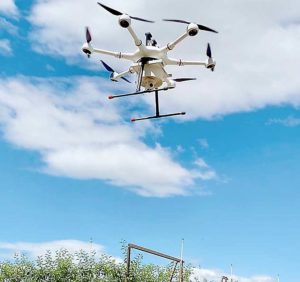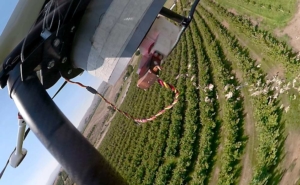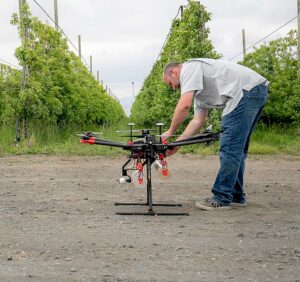
Editor’s note: This story has been updated to include Precision X-Ray Irradiation, the name of the Madison, Connecticut, company that makes the X-ray machines M3 Agriculture Technologies is using for sterile codling moth rearing. The manufacturer was a proprietary trade secret at the time of publication in our April 1, 2024, issue.
The tech company behind sterile insect release in Washington is launching a new way of making infertile codling moths.
With help from a federal grant, M3 Agriculture Technologies is building modular X-ray facilities to sterilize moths instead of using the traditional practice of exposing them to gamma rays.
The move could democratize the use of sterile insect release, a pest management technique up until now overseen by federal nuclear authorities, said CEO Nathan Moses-Gonzales.
“It is a bit crazy,” Moses-Gonzales said. “We’re trying to do something that has classically been the (mandate) of the federal government.”
With the shift, M3 plans to build its own domestic supply chain of the sterile moths it currently imports from an irradiation facility in British Columbia, Canada. This will make its services available to more apple orchards, pear orchards and also to nut and citrus crops.
The company aims to start rearing its first U.S. colony by the end of this year, he said.
So far, M3 has built one unit at a construction company in Eastern Washington. The 10- by 40-foot fiberglass facility has two rooms: one for three X-ray machines similar in scale to those in a dentist’s office, the other for storing chilled moths. The company shipped the structure to its research headquarters in Tempe, Arizona, where scientists will perfect the X-ray sterilization process.
The startup work is funded by a $1 million grant from the U.S. National Nuclear Security Administration’s Office of Radiological Security. Precision X-Ray Irradiation of Madison, Connecticut, makes the X-ray machines M3 is using in its units.
Once the company finishes the first facility, it will start building as many as the market demands, setting them up near the orchards they serve, Moses-Gonzales said.

History of success
The sterile insect technique involves releasing infertile pests to mate with a feral population, producing eggs that won’t hatch. The method has eradicated the screwworm cattle pest and the pink bollworm cotton pest in North America. Agriculture officials in California currently use sterilized navel orangeworm moths in almond trials, though it has not yet been adopted commercially.
For more than 20 years, apple and pear growers in British Columbia have used sterile codling moths on a mandatory, areawide basis. The Canadian government’s 30,000-square-foot Okanagan Sterile Insect Release Program facility in Osoyoos has helped growers to decrease their use of codling moth chemical insecticides by more than 90 percent.
However, pome fruit acreage in Canada has been shrinking for the past 25 years, leaving the facility with excess capacity, said Melissa Tesche, former general manager. Since 2018, the facility’s board of directors has allowed distribution of moths for trials in Washington, Michigan, New Zealand and Australia.
Holding the sole contract to move the bugs, M3 shifted those trials into commercial work, a departure for the government program never set up for sales, Tesche said. “The board is taking a moment to address the business side of this,” she said.
The group will take new commercial distribution bids at the end of this year. M3 plans to apply.
Sterile insect technique in the U.S.
With the imported Osoyoos moths, M3 currently treats about 4,500 to 5,000 acres in Washington.
The sterile insect technique works well when used in conjunction with healthy, existing management methods, said Chris Adams, an Oregon State University entomologist and chair of a Northwest task force composed to push back against a resurgence in codling moth pressure. However, most Oregon pear growers will not find sterile insects cost-effective at this point, he said.
California has only one year of trials on three commercial pear blocks in Sacramento and Lake counties, said Chuck Burks, U.S. Department of Agriculture research entomologist in Parlier. The 2023 results indicate the technique is compatible with existing mating disruption and soft insecticide programs, Burks said. This year, he and fellow researchers plan to repeat the trials, funded by the California Pear Advisory Board.
Getting enough moths has been M3’s limiting factor, but setting up a gamma ray facility similar to the one in Osoyoos would be next to impossible in the United States, Moses-Gonzales said. Under the John S. McCain National Defense Authorization Act of 2019, federal nuclear authorities are required to replace the use of cesium-137 isotopes with X-rays by 2027. Ag techies figure cobalt-60, used to irradiate moths, faces the same fate.
Even if the U.S. government allowed a facility, M3 would need a customer base of 20,000 acres to break even, Moses-Gonzales said. With the modular X-ray approach, that threshold will drop to 1,000 acres.
The smaller facilities will also shorten the supply chain, allowing the moths to arrive at the orchard healthier and better able to compete with the wild, fertile population.
Adams is excited about the X-ray method but wants to see more research before he’s sure it can match the scale required to treat the Washington acreage under sterile insect treatment now.
“X-ray takes much longer to achieve the same level of sterility and requires smaller batches of insects per treatment,” he said.
M3 intends to continue importing isotope-treated moths from Canada, Moses-Gonzales said, but he expects that as manufacturing speeds up, the X-ray approach will eventually surpass the capacity of the gamma ray facility.
“It should make it much cheaper,” Moses-Gonzales said.
—by Ross Courtney









Leave A Comment